 What are the Signs that Your London Kitchen Needs a Refurbishment
What are the Signs that Your London Kitchen Needs a Refurbishment

Recognising the Need for Kitchen Refurbishment
When stepping into your London kitchen, certain signs may indicate it’s time for a refurbishment. These signs often manifest as wear and tear that not only affect the kitchen’s aesthetics but also its functionality and safety.
Common Signs of Wear and Tear
- Cracked Countertops: These are not just unsightly; they can also harbour bacteria and compromise the workspace.
- Worn Flooring: Beyond an outdated look, damaged flooring can be a tripping hazard.
- Structural Deterioration: This includes issues like water damage or weakened cabinetry, which can lead to more serious problems if left unaddressed.
Inefficiency in Layout
An inefficient layout is often noticeable when performing daily tasks. You might find yourself taking extra steps due to poorly placed appliances or experiencing difficulty in accessing utensils and ingredients due to inadequate storage.
Safety Concerns Prompting Renovation
- Outdated Appliances: These can become fire hazards or may not operate at optimal safety standards.
- Leaks and Mould: These not only pose health risks but can also lead to structural damage.
Personal Style as a Catalyst for Change
Your kitchen should reflect your current tastes and lifestyle. If you find that the style no longer suits you or the space doesn’t accommodate your needs, it may be time to consider an update. This could involve rethinking the colour scheme, updating the backsplash, or reconfiguring the space to better serve your household’s dynamics.
Assessing Kitchen Functionality and Flow

Evaluating the efficiency of a kitchen’s layout hinges on several factors. One must consider the ease of movement between key areassink, stove, and refrigeratoroften referred to as the kitchen work triangle. An optimal layout facilitates a smooth flow of culinary activities without unnecessary interruptions.
The Role of Kitchen Storage
Storage is a cornerstone of kitchen functionality. Adequate shelving and cabinetry should accommodate all utensils, appliances, and pantry items, minimising clutter and maximising accessibility. Custom storage solutions can be tailored to your unique needs, ensuring that every item has a designated place.
Enhancing Meal Preparation
An optimised kitchen layout can significantly enhance meal preparation. It allows for logical placement of appliances and counter space, creating an environment where cooking tasks can be performed efficiently. Consideration of work zones for prepping, cooking, and cleaning can streamline the cooking process.
Support or Hindrance of Culinary Activities
Your current kitchen setup may either support or hinder culinary activities. An assessment should be made of the counter space for food preparation, the adequacy of lighting, and the functionality of appliances. If these elements are found lacking, it may be time to consider a refurbishment that addresses these critical aspects, thereby transforming your kitchen into a space that both inspires and facilitates culinary endeavours.
Identifying Outdated Kitchen Appliances

Outdated kitchen appliances often exhibit clear indicators such as decreased efficiency, frequent breakdowns, or lack of modern features like digital controls. If your appliances are not Energy Star rated, this could be a sign they are consuming more power than necessary.
Contribution of Modern Technologies to Energy Efficiency
Modern kitchen technologies are designed to be energy-efficient, often bearing Energy Star certifications. These appliances use less electricity and water, contributing to a reduced carbon footprint and lower utility bills.
Advantages of Smart Kitchen Appliances
Smart kitchen appliances offer benefits such as remote control via smartphones, programmable settings for optimal energy use, and diagnostics that can alert you to maintenance needs. These features not only add convenience but can also lead to significant energy savings over time.
Impact of Appliance Efficiency on Energy Costs
Efficient appliances can have a substantial impact on long-term energy costs. By consuming less power and operating more effectively, they reduce monthly utility expenses. Over the lifespan of the appliance, this can translate into considerable cost savings.
Enhancing Market Appeal Through Kitchen Design

The design of your kitchen significantly influences the market appeal of your property. A well-designed kitchen that balances aesthetic appeal with functionality can be a compelling feature for potential buyers.
Crucial Aesthetic Elements for Contemporary Kitchens
Contemporary London kitchens often feature minimalist designs with clean lines, neutral colour palettes, and high-quality materials. Key elements include:
- Streamlined Cabinetry: Sleek, handle-less cabinets offer a modern touch.
- Statement Worktops: Materials like quartz or granite add luxury and durability.
- Integrated Appliances: These create a seamless look and save space.
- Innovative Lighting: LED strips and pendant lights enhance the kitchen’s ambiance.
Kitchen Refurbishment’s Role in Increasing Home Value
A kitchen refurbishment can lead to a significant increase in home value. By updating the space with modern amenities and a fresh design, you’re not only improving the functionality but also making the property more attractive to discerning buyers.
Current Design Trends and Buyer Preferences
Buyers are often drawn to kitchens that offer a combination of the latest design trends and timeless features. Current trends include:
- Eco-friendly Materials: Sustainable choices resonate with environmentally conscious buyers.
- Smart Technology: Kitchens equipped with smart home devices are increasingly popular.
- Open-plan Layouts: Spaces that facilitate social interaction are highly sought after.
By incorporating these elements, a kitchen refurbishment can align with buyer preferences and contribute to a higher property valuation.
Identifying Safety Risks in Kitchen Features
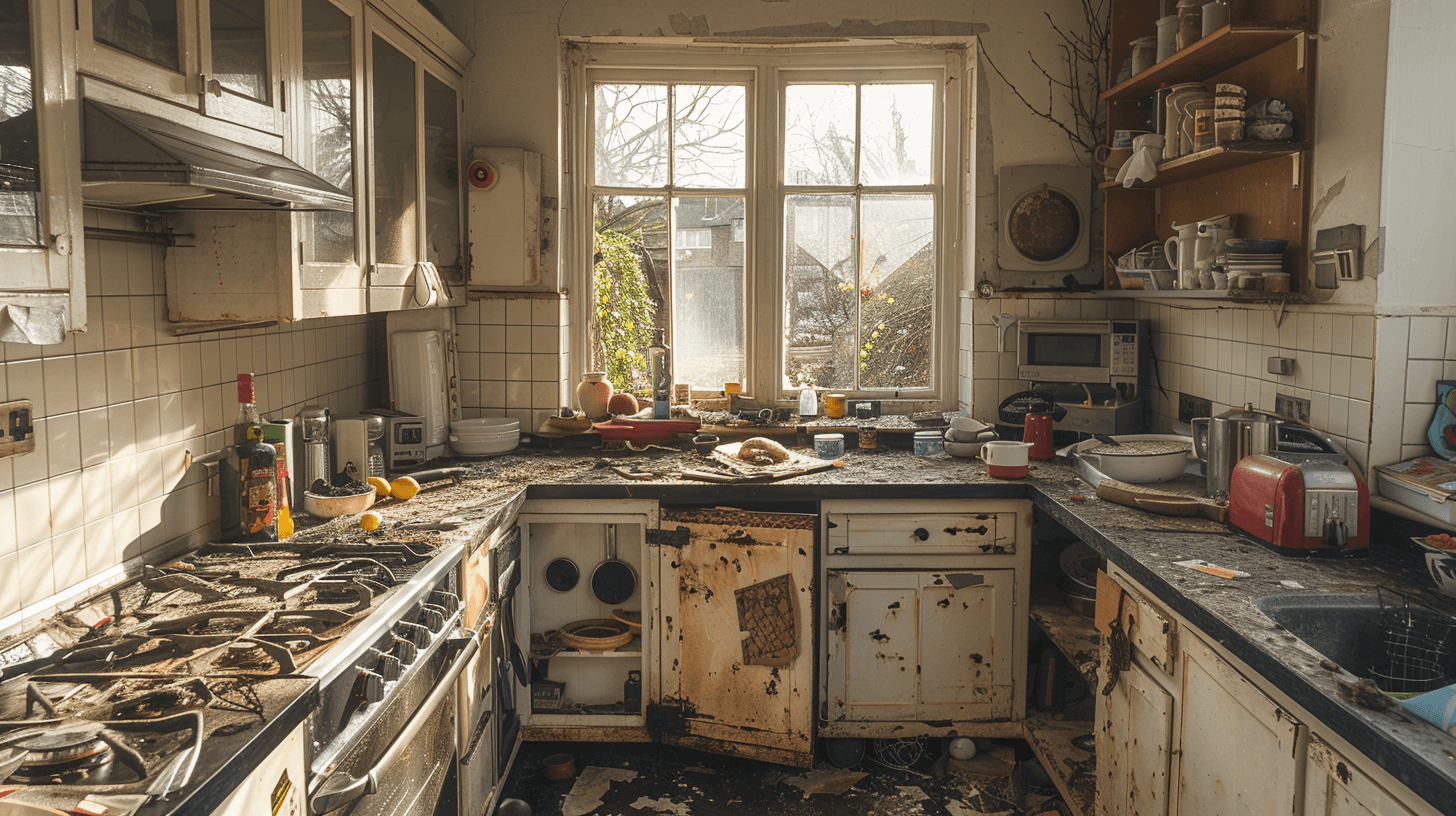
When considering a kitchen renovation, safety is paramount. Features that pose the highest safety risks include outdated appliances that may malfunction, worn or slippery flooring that could lead to falls, and inadequate ventilation that can cause health issues.
Upgrading Flooring and Appliances for Enhanced Safety
Updating kitchen flooring can significantly improve safety. Options like anti-slip tiles or textured vinyl reduce the risk of accidents. Similarly, modern appliances come with enhanced safety features such as automatic shut-off and child lock functions, contributing to a safer kitchen environment.
Health Benefits of Addressing Mould and Leaks
Addressing issues like mould and leaks not only prevents structural damage but also protects your health. Mould can cause respiratory problems, while leaks can lead to water damage and electrical hazards. Renovating to fix these issues ensures a healthier living space.
The Role of Safe Kitchen Design in Overall Well-being
A kitchen designed with safety in mind supports overall well-being. This includes proper lighting to avoid eye strain, ergonomically designed cabinetry to prevent back pain, and non-toxic materials to ensure good indoor air quality. A safe kitchen is a cornerstone of a healthy home.
Maximising Space in Small Kitchens
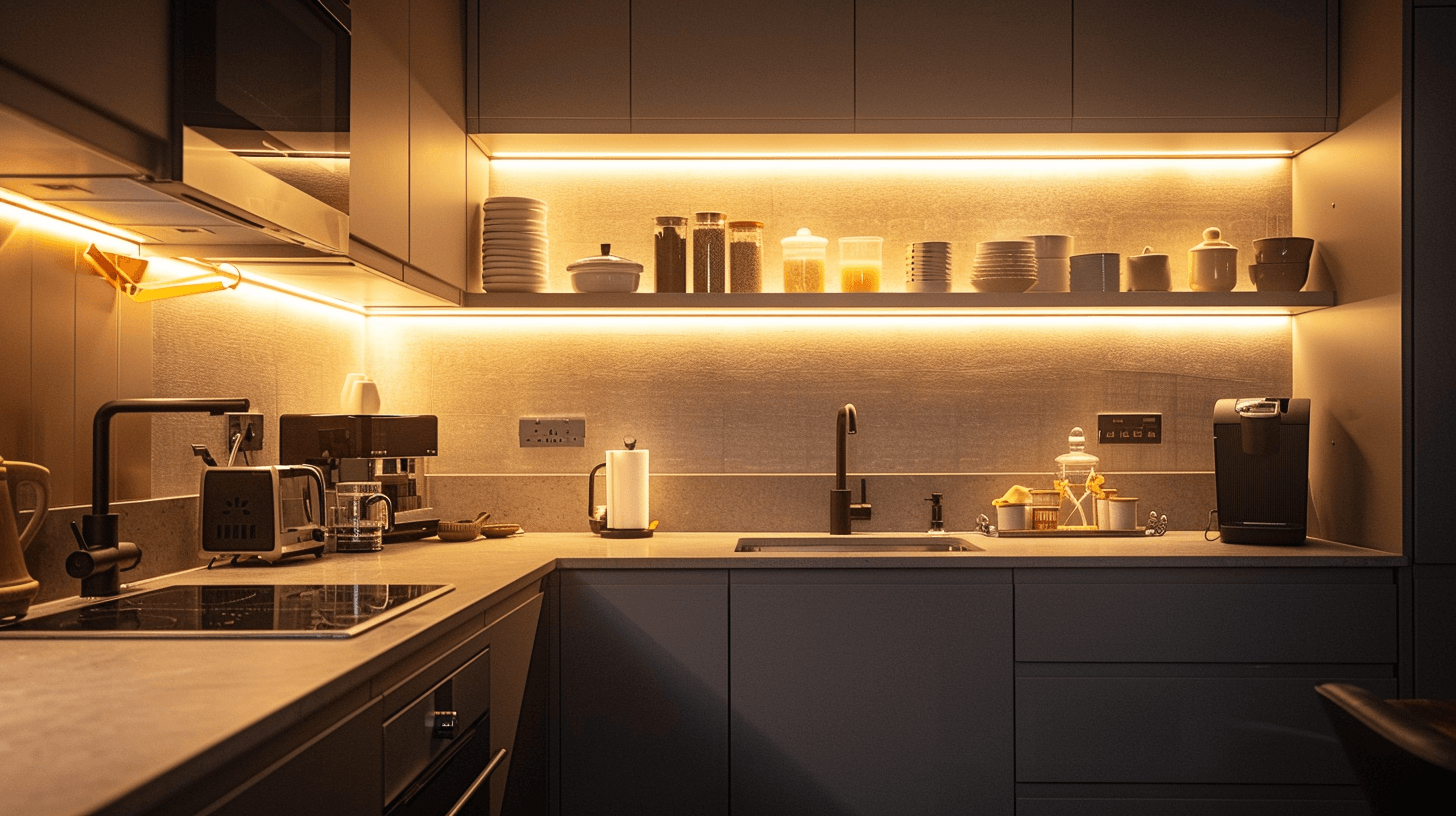
Effective space optimization in small kitchens is crucial for functionality. Here are strategies to maximise space:
Custom Storage Solutions
- Vertical Storage: Utilise wall space with tall cabinets and open shelving.
- Under-Counter Units: Drawers and pull-out organisers make use of underutilised areas.
- Corner Cabinets: Innovative corner solutions can turn dead space into valuable storage.
Design Techniques for Spaciousness
- Uniform Colour Palette: Light, neutral colours make spaces appear larger.
- Reflective Surfaces: Mirrored backsplashes or glossy finishes can visually expand the room.
- Streamlined Design: Minimalist aesthetics with clean lines avoid visual clutter.
Contribution to Functionality
Space optimization directly impacts kitchen functionality:
- Efficient Workflow: Properly organised tools and ingredients save time and effort.
- Ease of Movement: A decluttered kitchen allows for unobstructed movement between work areas.
- Adaptability: Custom solutions ensure the kitchen can evolve with your changing needs.
Allocating Funds for Kitchen Renovation
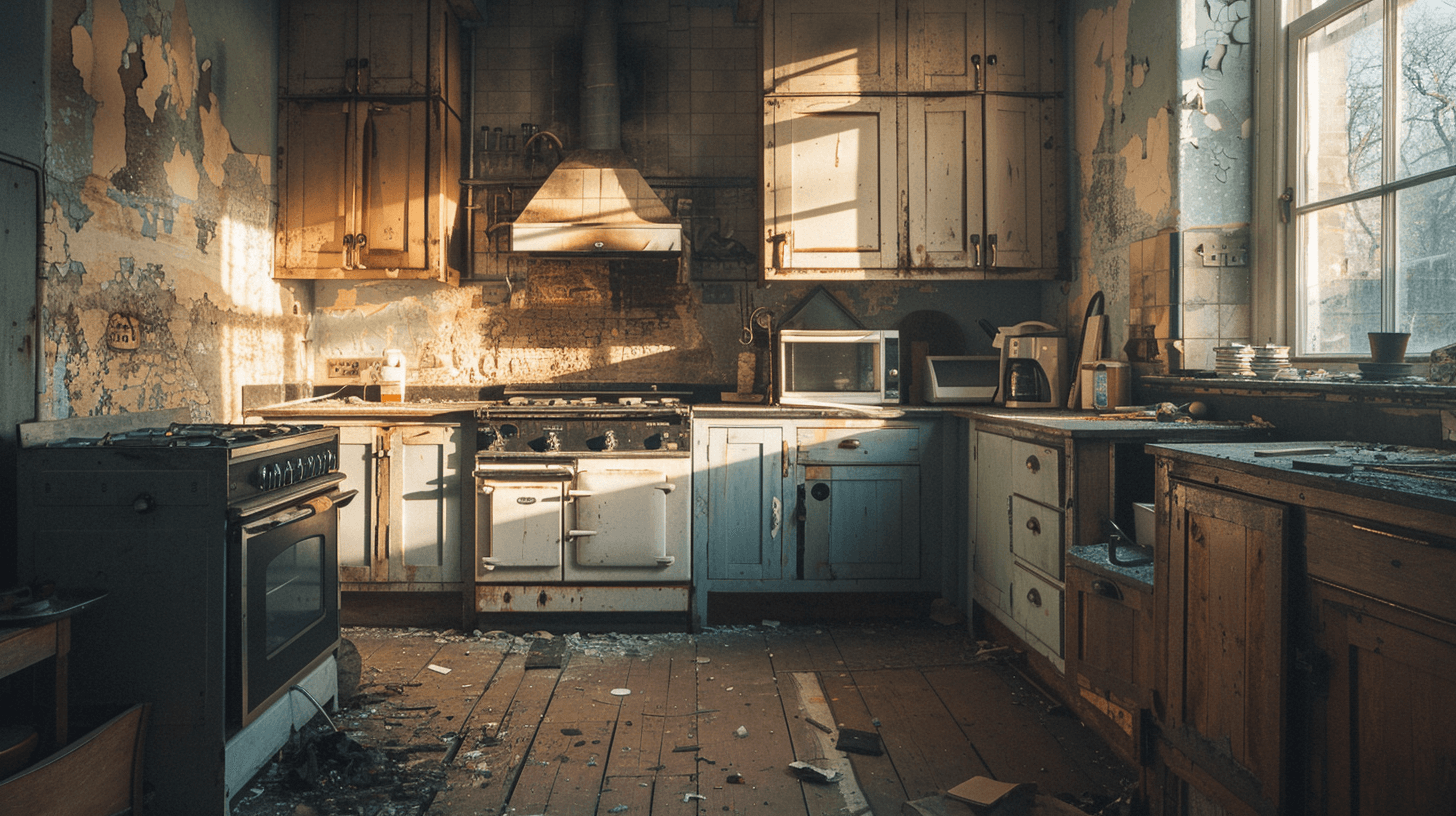
Allocating funds for a kitchen renovation requires a balance between your vision and the practical budget. Begin by itemising each aspect of the renovation, from cabinetry to appliances, and allocate funds based on priority and necessity.
Implementing Cost-Saving Measures
Cost-saving measures that maintain quality include:
- Retaining Original Layout: Keeping plumbing and electrical points unchanged to avoid costly alterations.
- Refurbishing Existing Units: Instead of full replacement, consider painting or changing just the doors of cabinets.
- Comparative Shopping: Source materials and appliances during sales or from wholesale suppliers.
Balancing Budget and Bespoke Solutions
To balance between a budget and bespoke solutions:
- Prioritise Areas: Invest in high-impact areas like worktops and hardware, while opting for budget-friendly options elsewhere.
- Mix and Match: Combine off-the-shelf products with a few custom pieces for a personalised yet cost-effective design.
Long-Term Financial Benefits
Investing in a kitchen refurbishment can yield long-term financial benefits:
- Energy Savings: Energy-efficient appliances reduce utility bills.
- Increased Property Value: A modern kitchen can significantly increase your property’s market value.
- Durability: Quality materials and appliances ensure longevity, reducing the need for future repairs or replacements.
Selecting Durable and Stylish Materials
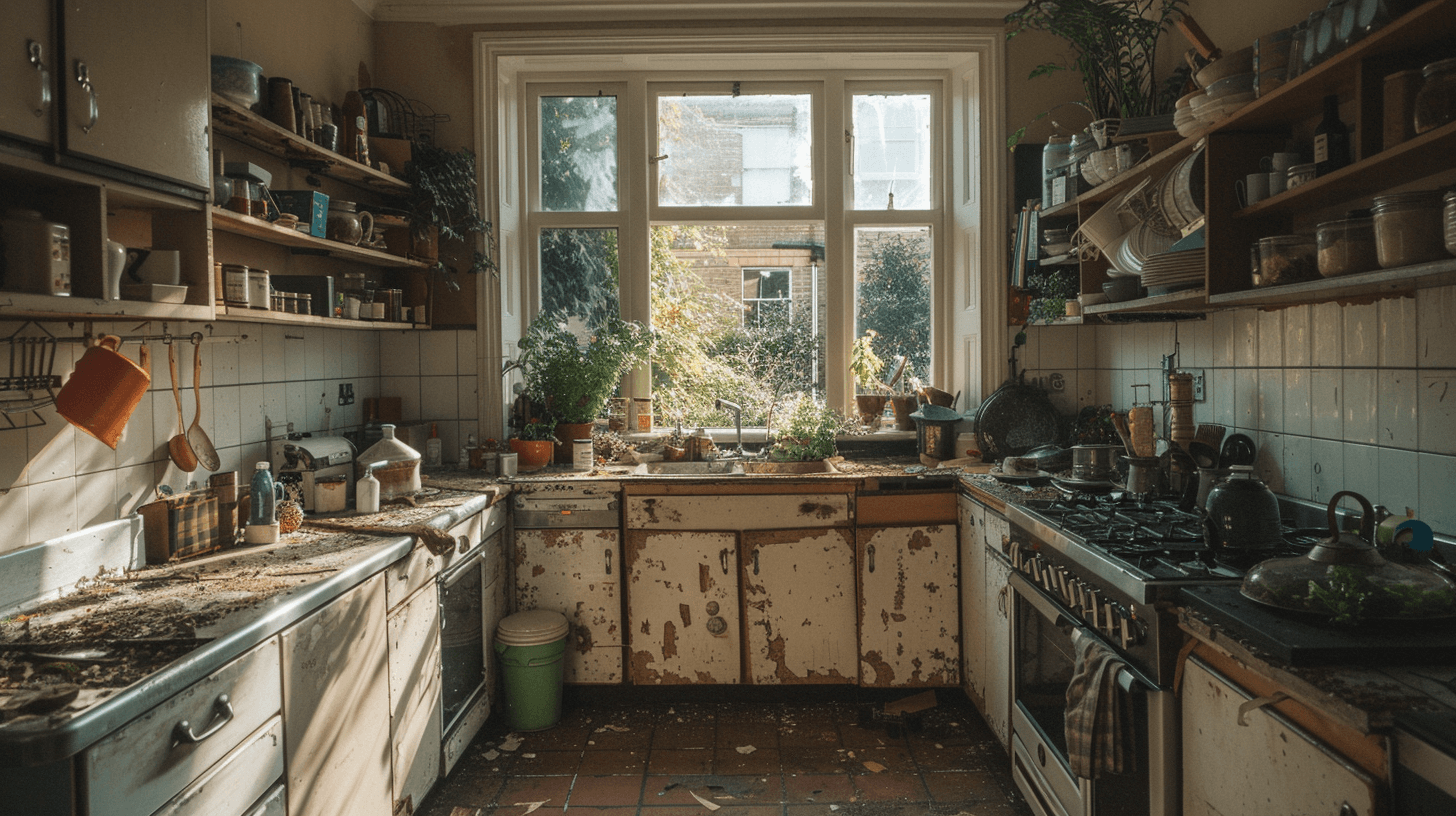
When refurbishing your kitchen, choosing materials that offer both durability and aesthetic appeal is crucial. Consider the following options:
Materials That Marry Form and Function
- Quartz Countertops: Resistant to scratches and stains, quartz provides a sleek look.
- Hardwood Flooring: Offers warmth and can be refinished multiple times for longevity.
- Stainless Steel Sinks: Known for their durability and ease of cleaning, they also add a modern touch.
Impact of Material Choices on Maintenance
The longevity of your kitchen is significantly influenced by the materials you select:
- Laminate Cabinetry: While budget-friendly, it may not withstand heavy use as well as solid wood.
- Tile Backsplashes: Easy to clean and maintain, they can also serve as a focal point of design.
Advantages of Sustainable Materials
Sustainable materials are not only good for the environment but also for your home:
- Bamboo: A fast-growing, renewable resource that’s as sturdy as traditional woods.
- Recycled Glass: For countertops that are unique and eco-friendly.
Complementing the Overall Home Style with Finishes
Finishes should align with the broader aesthetic of your home:
- Cabinet Hardware: Choose finishes that echo the style of your home’s fixtures and fittings.
- Paint: Opt for low-VOC paints in colours that harmonise with the rest of your living space.
Key Stages in Kitchen Refurbishment
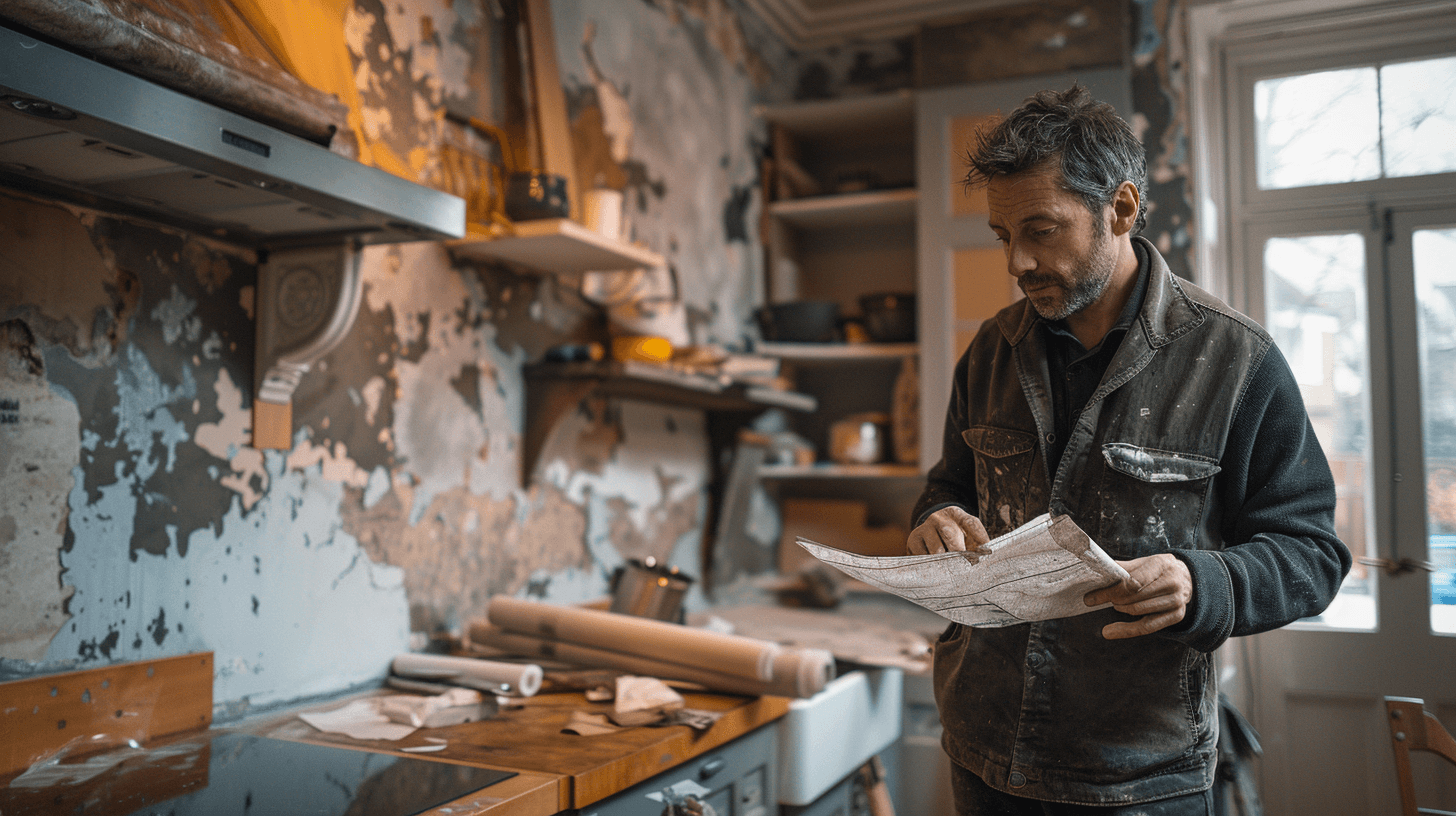
A typical kitchen refurbishment project involves several key stages:
Initial Consultation and Design
- Assessment: Professionals evaluate your current kitchen’s layout and discuss your needs.
- Design: Creation of a new kitchen design tailored to your preferences and functional requirements.
Material Selection and Sourcing
- Choosing Materials: You select cabinets, worktops, appliances, and other materials.
- Ordering: The contractor orders the chosen materials, often requiring a lead time.
Demolition and Structural Work
- Removal: Existing kitchen units, appliances, and sometimes walls are removed.
- Preparation: Structural changes, if any, are made to accommodate the new design.
Installation and Finishing
- Building: Installation of new cabinetry, appliances, and worktops.
- Finishing Touches: Painting, tiling, and final adjustments are completed.
Expected Duration of Kitchen Renovation
The duration of a kitchen renovation can vary:
- Small Projects: May take as little as two weeks.
- Larger, Custom Projects: Can extend to several months, depending on complexity and material availability.
Factors Influencing Renovation Duration
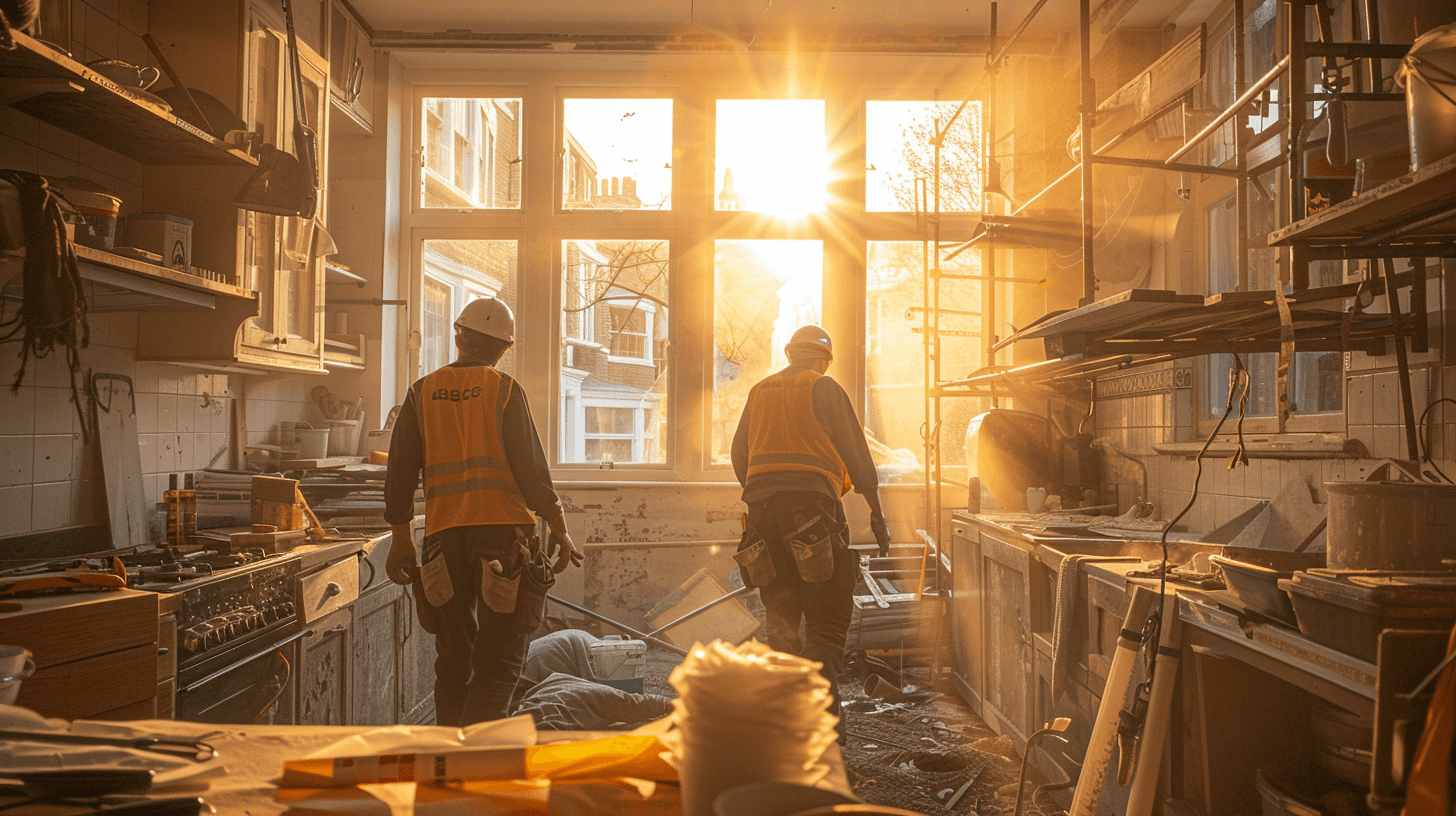
Several factors can influence the timeline:
- Scope of Work: More extensive renovations will naturally take longer.
- Material Delivery: Delays in sourcing materials can extend the project.
- Unforeseen Issues: Structural problems or changes to the plan can cause delays.
Preparing for Renovation Disruption

To prepare for the disruption:
- Temporary Kitchen: Set up a temporary kitchen space elsewhere in your home.
- Schedule Adjustments: Plan for meal options that don’t require a full kitchen.
- Communication: Stay in regular contact with the contractor for updates on progress and potential schedule changes.
The Importance of Professional Kitchen Fitters
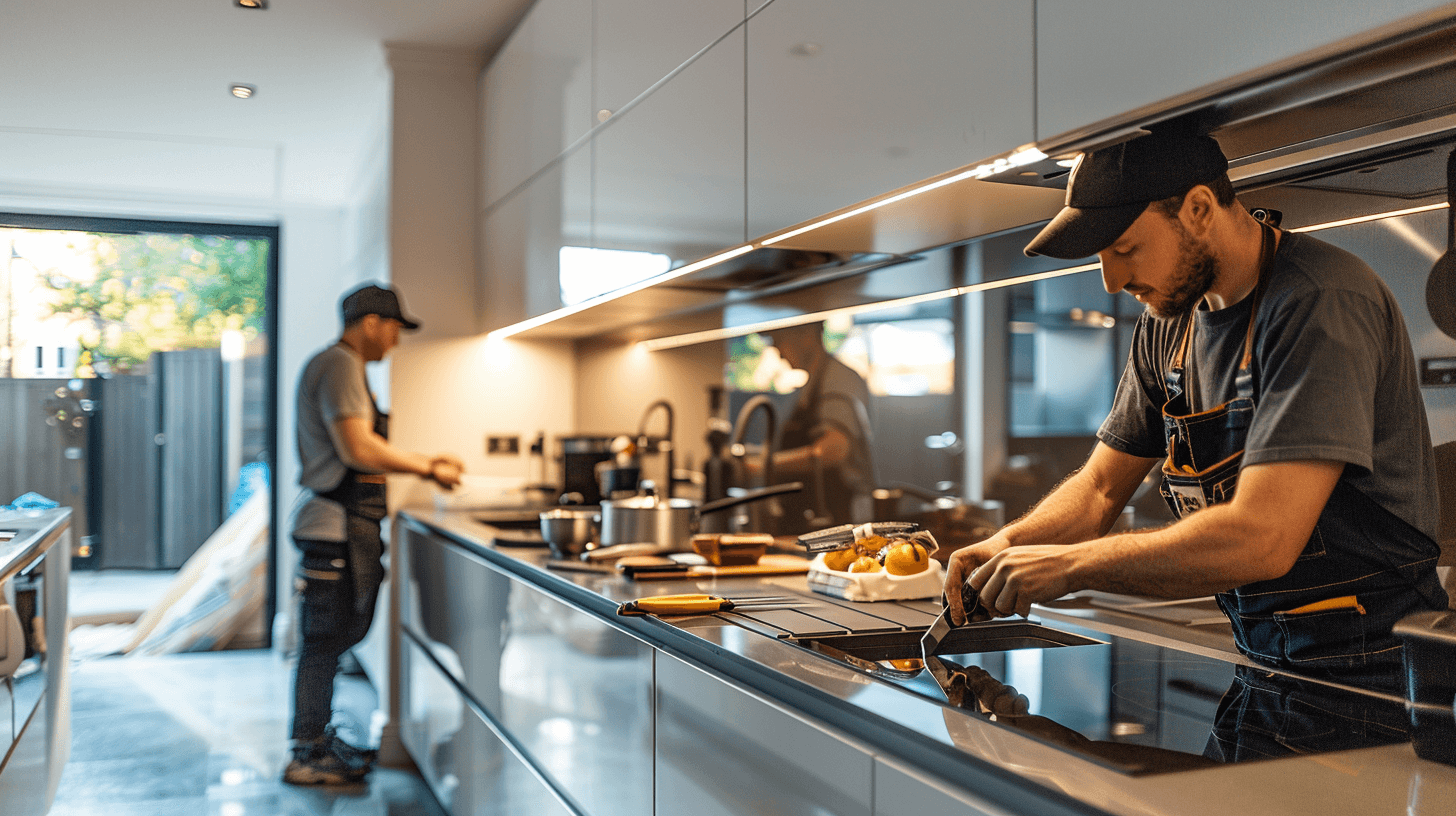
Engaging professional kitchen fitters is essential for ensuring that your kitchen refurbishment is executed to the highest standards. These experts bring precision, technical skill, and a wealth of experience to your project, ensuring that every aspect of the kitchen is installed correctly and functions optimally.
Qualifications of a Reputable Kitchen Fitter
A reputable kitchen fitter should possess:
- Accreditation: Certifications from recognised trade bodies.
- Experience: A proven track record with a portfolio of completed projects.
- References: Positive testimonials from previous clients.
Contribution of Professional Designers
Professional designers play a pivotal role in the success of a kitchen renovation by:
- Creating Cohesive Designs: They ensure that the new kitchen is not only functional but also aesthetically pleasing.
- Optimising Space: Designers can maximise utility in even the smallest kitchens.
- Personalising the Space: They tailor the design to reflect your personal style and needs.
Services Offered by Kitchen Fitters and Designers
Kitchen fitters and designers typically offer a comprehensive suite of services, including:
- Design Consultation: Collaborating with you to create a custom kitchen design.
- Material Sourcing: Assisting in selecting high-quality materials and fixtures.
- Installation: Expertly fitting cabinets, appliances, and worktops.
- Project Management: Overseeing the renovation from start to finish to ensure timely completion.
Enhancing Energy Efficiency Through Kitchen Refurbishment
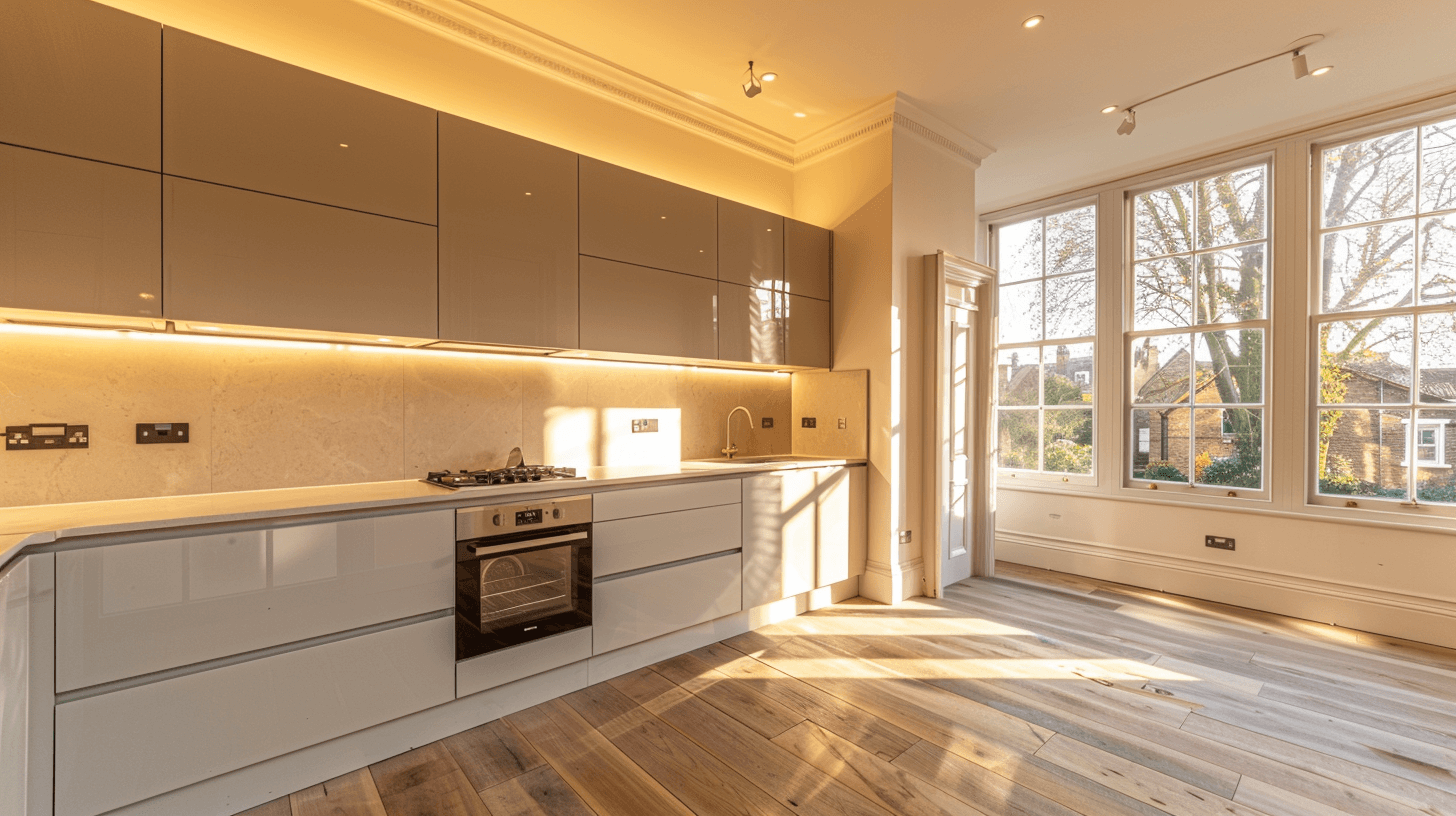
Refurbishing your kitchen presents an opportunity to significantly improve energy efficiency. By incorporating modern appliances with higher Energy Star ratings, you’re investing in devices that consume less power and water. This not only reduces your utility bills but also lessens your environmental footprint.
Key Features of an Eco-Friendly Kitchen Design
An eco-friendly kitchen design includes:
- Energy-Efficient Appliances: Look for high-efficiency ratings.
- Sustainable Materials: Use cabinetry and countertops made from recycled or renewable resources.
- LED Lighting: Opt for LED fixtures that offer longevity and reduced energy consumption.
Benefits of Sustainable Kitchen Practices
Sustainable practices in kitchen renovation extend beyond energy savings:
- Reduced Waste: By choosing durable materials, you minimise the need for future replacements.
- Healthier Living Space: Non-toxic, low-VOC materials improve indoor air quality.
- Conservation of Resources: Using water-efficient fixtures conserves water, an essential resource.
Incentives for Green Kitchen Solutions
Various incentives may be available for incorporating green solutions into your kitchen:
- Government Rebates: Some jurisdictions offer rebates for purchasing energy-efficient appliances.
- Tax Credits: You may be eligible for tax credits when installing renewable energy systems.
- Certification Programmes: Programmes like LEED can provide benefits for meeting sustainability criteria in your renovation.
Partnering with “All Service 4U” for Kitchen Refurbishment

Comprehensive Assistance Throughout the Renovation Process
“All Service 4U” offers a full spectrum of kitchen refurbishment services, ensuring a tailored approach to each project. From initial design consultation to the final touches, their team of experts is equipped to handle all aspects of your kitchen transformation.
Unique Services for London Kitchens
The unique services provided by “All Service 4U” include:
- Bespoke Design: Crafting custom kitchen designs that reflect your personal style and functional needs.
- Material Procurement: Sourcing high-quality materials and fixtures to fit your budget and design.
- Skilled Craftsmanship: Employing experienced fitters who bring precision and attention to detail to every installation.
Ensuring a Seamless Renovation Experience
To ensure a seamless experience, “All Service 4U” prioritises:
- Clear Communication: Keeping you informed at every stage of the project.
- Timely Execution: Adhering to a strict timeline to minimise disruption to your home life.
- Quality Control: Conducting thorough checks to guarantee the highest standards of workmanship.
Reasons to Choose “All Service 4U”
Selecting “All Service 4U” for your kitchen renovation needs ensures:
- Expertise: A team with extensive experience in kitchen refurbishments.
- Reliability: A track record of completing projects on time and within budget.
- Customer Satisfaction: A commitment to exceeding client expectations with every kitchen they refurbish.

